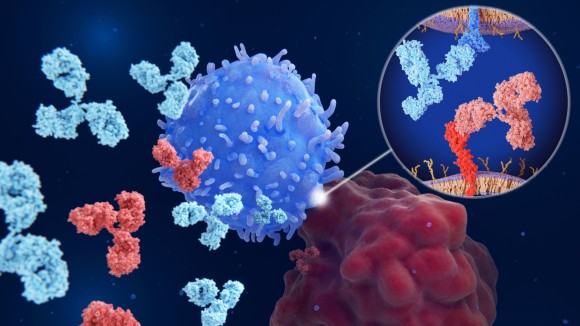Collection
ESMI Collection: Imaging Immune Responses
- Submission status
- Open
- Submission deadline
This Collection supports and amplifies
research related to SDG3 and SDG4.
This Collection in npj Imaging from our partner Society, the European Society for Molecular Imaging (ESMI), highlights cutting-edge innovations at the interface of immunology, imaging sciences, and clinical research. By visualizing immune activity in its natural context, researchers can now investigate the spatial and temporal dynamics of immune cells, their interactions with tumors, infections, or damaged tissues, and their response to therapeutic interventions. Such approaches offer unprecedented opportunities to deepen our mechanistic understanding of immune function and to translate this knowledge into improved diagnostics and treatments.
A key focus of this ESMI Collection is on how imaging can contribute to the growing field of precision immunotherapy. Immune checkpoint inhibitors, CAR-T cells, cancer vaccines, and other immune-based strategies have transformed treatment paradigms, but predicting and monitoring patient responses remains challenging. Imaging immune dynamics provides a unique, non-invasive window into therapy effectiveness, allowing for early identification of responders versus non-responders, guiding adaptive treatment decisions, and accelerating the development of next-generation immunotherapies.
Beyond oncology, immune imaging holds promise across a wide range of diseases. Chronic inflammation, autoimmunity, infections, and age-related immune dysfunction are all areas where visualizing immune processes could generate critical insights. For example, imaging approaches can uncover how immune cells infiltrate tissues, how inflammation resolves—or fails to resolve—and how immune dysfunction contributes to pathogenesis.
Technological innovation is at the heart of this progress. Advances in PET and SPECT tracers, MRI-based cell tracking, optical imaging techniques, and hybrid modalities are broadening the spectrum of immune phenomena that can be studied. Novel probes targeting immune checkpoints, cytokines, or metabolic pathways are providing functional readouts of immune activity. Reporter gene systems and nanoparticle-based approaches are enabling sensitive, specific tracking of immune cell subsets in preclinical and translational settings. At the same time, improved imaging analytics—including machine learning and systems-level modeling—are essential to handle the complexity of high-dimensional datasets and extract meaningful biological and clinical insights.
This ESMI Collection invites submissions in areas including, but not limited to:
- Development of novel probes, tracers, and reporter systems for immune imaging, highlighting their biological application
- Multimodal imaging of immune cell trafficking and activation in vivo
- Imaging-guided evaluation of immunotherapies in oncology and beyond
- Applications in infection, inflammation, autoimmunity, and aging
- Clinical translation of immune imaging strategies in humans
- Computational and AI-driven approaches for immune image analysis
- Innovative methodologies integrating imaging with other omics technologies
By gathering these diverse contributions, the ESMI Collection aims to provide a comprehensive overview of the state of the art in immune imaging. It will showcase how visualizing the immune system in action not only advances fundamental immunology but also opens new pathways for diagnosis, prognosis, therapy monitoring, and drug development.

Editors
-
I. Jolanda M. de Vries, PhD
Department of Medical BioSciences, Radboud University Medical Center, The Netherlands
-
Dominik Sonanini, MD
Werner Siemens Imaging Center, University of Tübingen, Germany

